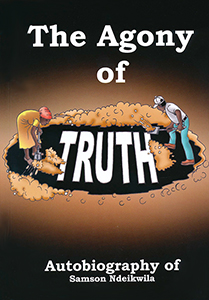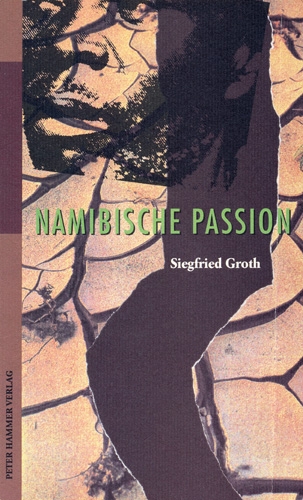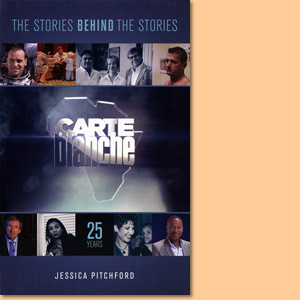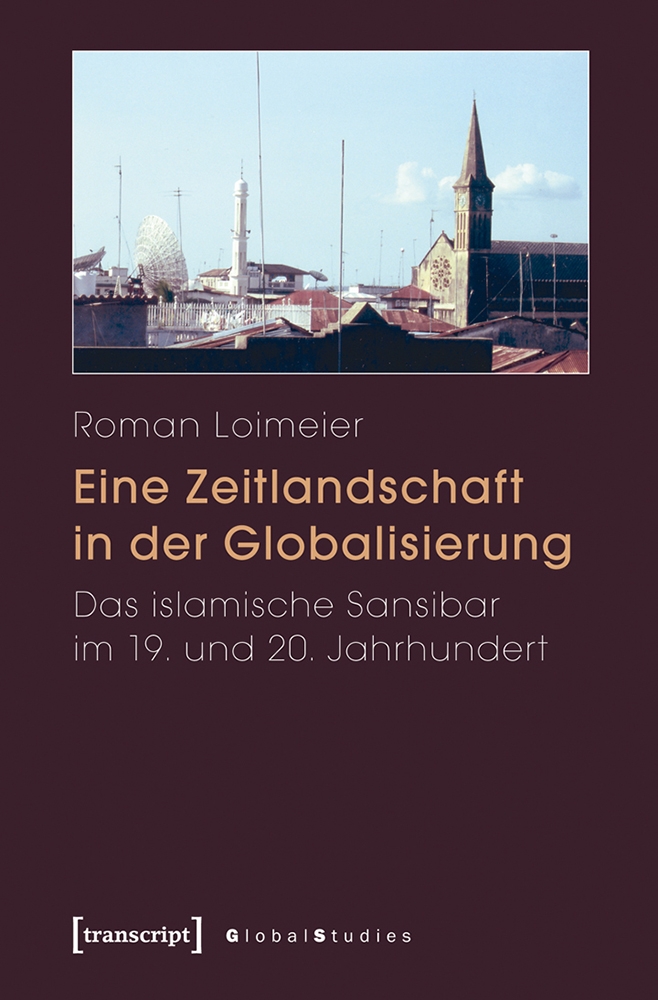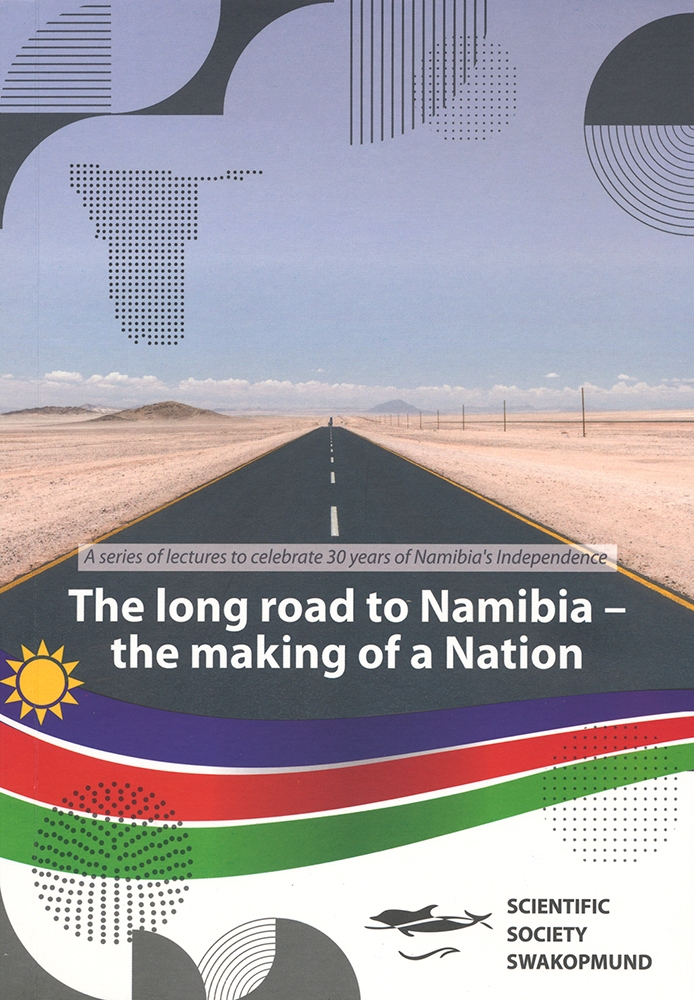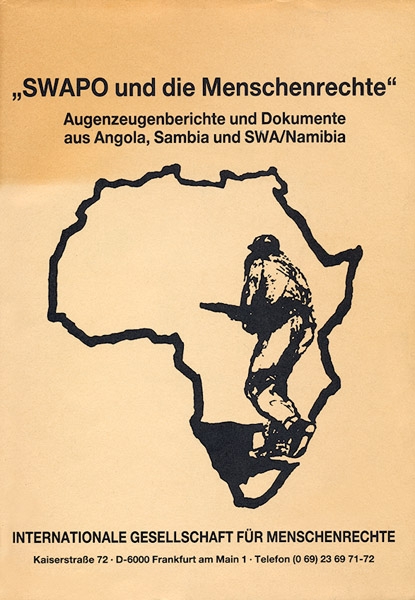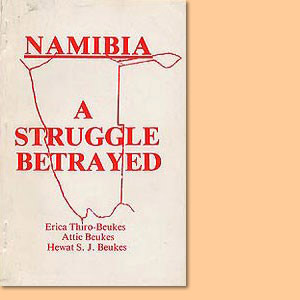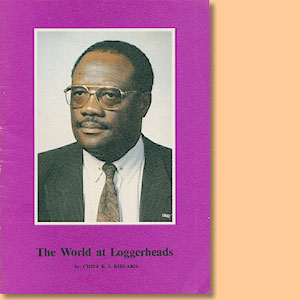The agony of truth. Autobiography of Samson Ndeikwila, by Samson Ndeikwila
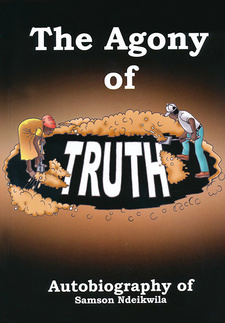
The agony of truth. Autobiography of Samson Ndeikwila. Kuiseb Publishers. Windhoek, Namibia 2014. ISBN 9789994576272 / ISBN 978-99945-76-27-2
The autobiography of Samson Ndeikwila will achieve its objective should it encourage many Namibians to speak and write truthfully about their own stories during the independence struggle. Most important, however, The Agony of Truth will achieve its ultimate objective should it contribute to the realization that any authority can abuse power in the absence of checks and balances, regardless of colour or nationality. This very important book is not an academic work but rather a collection of stories about SWAPO's atrocities.
SWAPO's Torture Methods
The ex-detainees explained how all of them were coerced into making false confessions and how in this way they incriminated themselves and other innocent people as enemy agents. They said that all those who refused to submit to false confessions lost their lives. They also recounted how drunkenness, drug use and negligence on the part of the interrogators pervaded the interrogation and torture sessions, leading to many deaths. Some ex-detainees cried bitterly and broke down when telling their stories and many of us shared their tears. They explained and sometimes demonstrated the different torture methods which were employed to extract false confessions from them. Among the torture methods were the following:
Initial beatings: Both male and female victims under interrogation were stripped naked and both their legs and arms were tied. They were then beaten with sticks and electrical wires until the torturers got tired or the victim fell unconscious.
Gasoline fuel and other inflammable substances such as hot-chilli, ointments and salt were applied to fresh wounds after the beatings and into the anus of the victim.
Petrol was poured over fresh wounds of torture; or the victim's legs were stretched apart and petrol was poured into his or her anus.
Helicopter method: The victim's hands and legs were tied together behind his or her back with a long rope, which was then pulled over a cross-bar until he or she was suspended in the air with his or her face downwards. Then, a stick was inserted in the ring formed by the hands and feet tied together, which was then forced down on the victim's back to inflict intolerable pain.
Honda generator-250 CC: The current of a Honda generator was applied after attaching one end of the wire to the machine and the other end to the person under interrogation.
Fire and cigarette butts were used to burn beards, cheeks, chest, legs, fingers and arms of some victims.
'Kambulumbumba' bow: Strings of the musical instrument Kambulum-bumba were tied around the head and turned to tighten their grip on the head of the victim, causing strange sounds in the head.
Burying: The victim was buried alive by slowly covering him or her with dry sand which penetrated the nose and mouth, suffocating the person and choking him or her into unconsciousness. This was repeated several times until the victim was totally exhausted and unable to move. Many people died through this method.
Hung-up suspension: The victim's ankles and wrists were tied with ropes, his or her body hung up horizontally between two trees and then swung, thus incapacitating his or her ankles and wrists during interrogations.
Psychological pressure: An AK-47 sub-machine gun or the Makarov pistol was pressed against the head of the victim to remind him or her of impending death if he or she failed to make a confession.
Coercion: Some interrogators approached victims privately, coercing them to make false confessions and reminding them that torture would continue until the victim submitted or died.
Testicles: A string was tied to the testicles of the victim during interrogations and pulled time and again.
Folded cloth: A ball of wrapped cloth was forced in the mouth of the victim during interrogation, thus preventing him or her from screaming.
Solitary confinement: Some victims were placed in solitary confinement for prolonged periods of time, resulting in some cases in partial or total psychological disorders.
Hot water was used to flush fresh wounds, an effective way of preventing the wounds from festering at least in the short term, and resulting in pronounced torture scars remaining forever.
The ex-detainees also recounted how on August 26, which today is Heroes Day and a public holiday in Namibia, was commemorated every year by removing some detainees from the dungeons to unknown destinations. They reported that particularly large numbers of detainees were removed in 1984 and 1986; also hundreds of detainees were again removed from Mungakwiyu dungeons in December 1988, never to be seen again. [...]
This is an excerpt from the book: The agony of truth. Autobiography of Samson Ndeikwila, by Samson Ndeikwila.
Title: The agony of truth
Subtitle: Autobiography of Samson Ndeikwila
Author: Samson Ndeikwila; Erika von Wietersheim
Publisher: Namibia Scientific Society
Windhoek, Namibia 2014
ISBN 9789994576272 / ISBN 978-99945-76-27-2
Softcover, 15 x 21 cm, 219 pages, some map sketches
Ndeikwila, Samson im Namibiana-Buchangebot
The agony of truth. Autobiography of Samson Ndeikwila
The Agony of Truth is Samson Ndeikwila's autobiography on SWAPO's ugly hidden secrets of unexplained deaths, disappearances, unjustified imprisonment, torture and accusations during the struggle for power in Namibia.
Weitere Buchempfehlungen
Namibische Passion
Das Buch Namibische Passion handelt vom unterdrückten Wissen von Morden, Folterungen und Entführungen der SWAPO an ihren eigenen Leuten in Nordnamibia und Angola.
Carte Blanche 25 Years. The Stories Behind the Stories
Carte Blanche burst onto the scene 25 years ago as a genre never before seen on South African television and tells the stories behind the stories.
Eine Zeitlandschaft in der Globalisierung: Das islamische Sansibar im 19. und 20. Jahrhundert
Die Entwicklung der islamischen Zeitlandschaft Sansibar in der Globalisierung des 19. und 20. Jahrhunderts aus unterschiedlichen Perspektiven.
SWAPO und die Menschenrechte
SWAPO und die Menschenrechte dokumentiert die bekannt gewordenen Verbrechen der SWAPO während der 80er Jahre: Bedrohung, Verschleppung, Folter und Mord.
Namibia. A Struggle Betrayed
Namibia. A Struggle Betrayed ist eine zeitgenössische SWAPO-kritische Schrift.
The World at Loggerheads
This essay looks at the various options and attempts to highlight the best choice available for the people of Namibia

